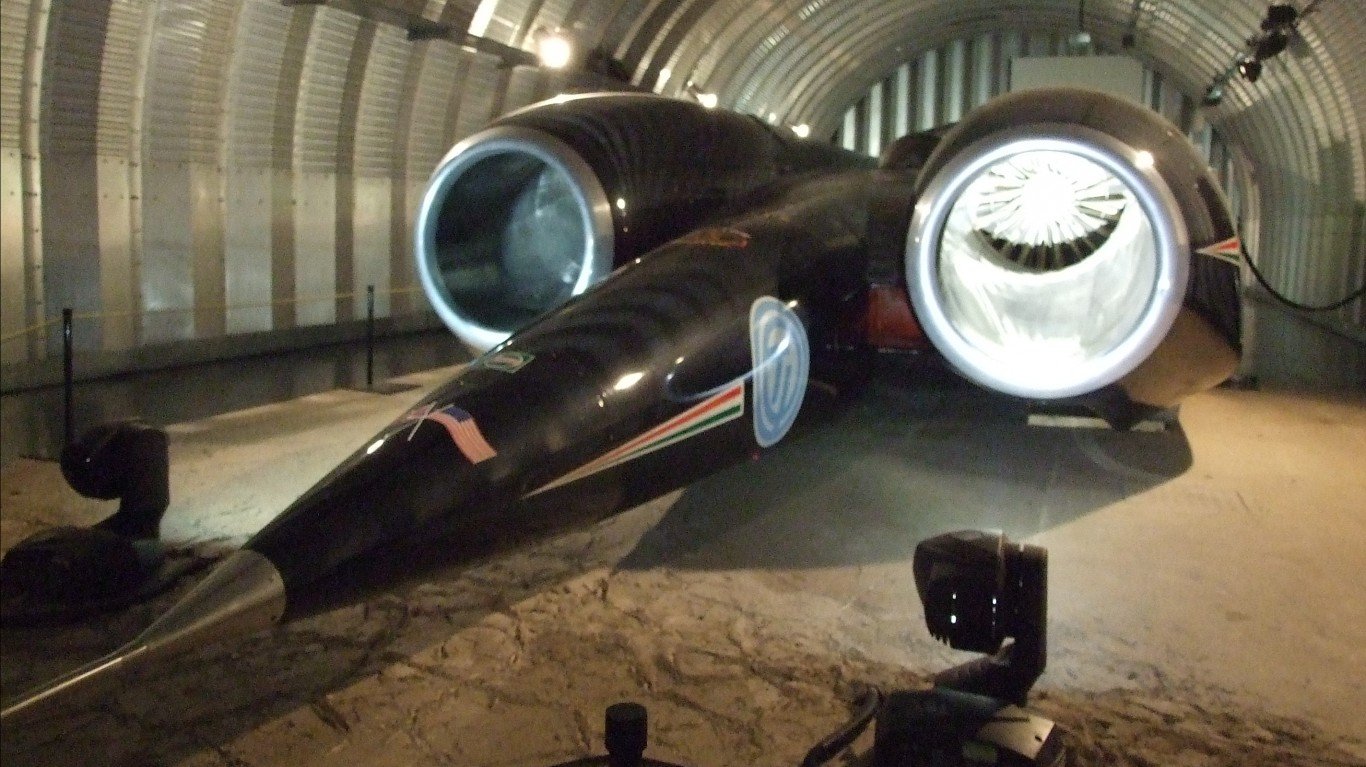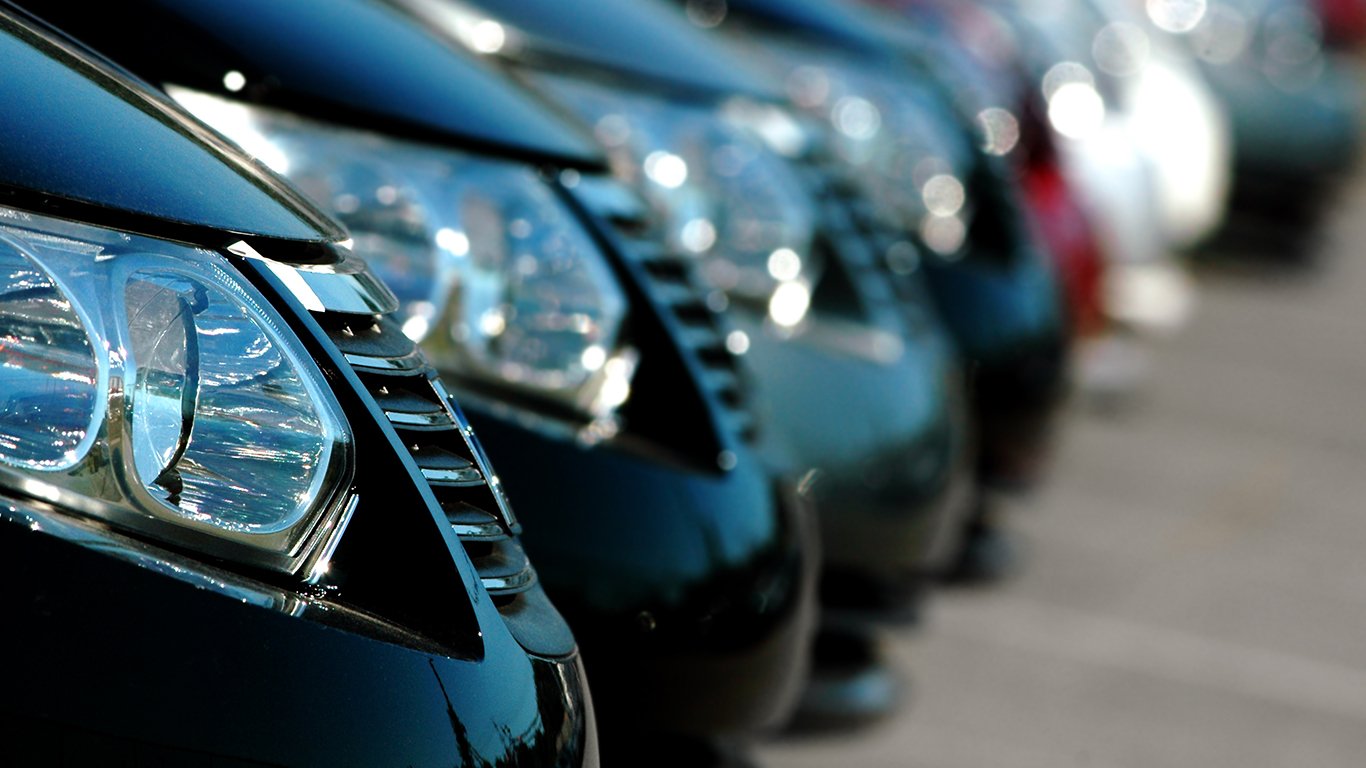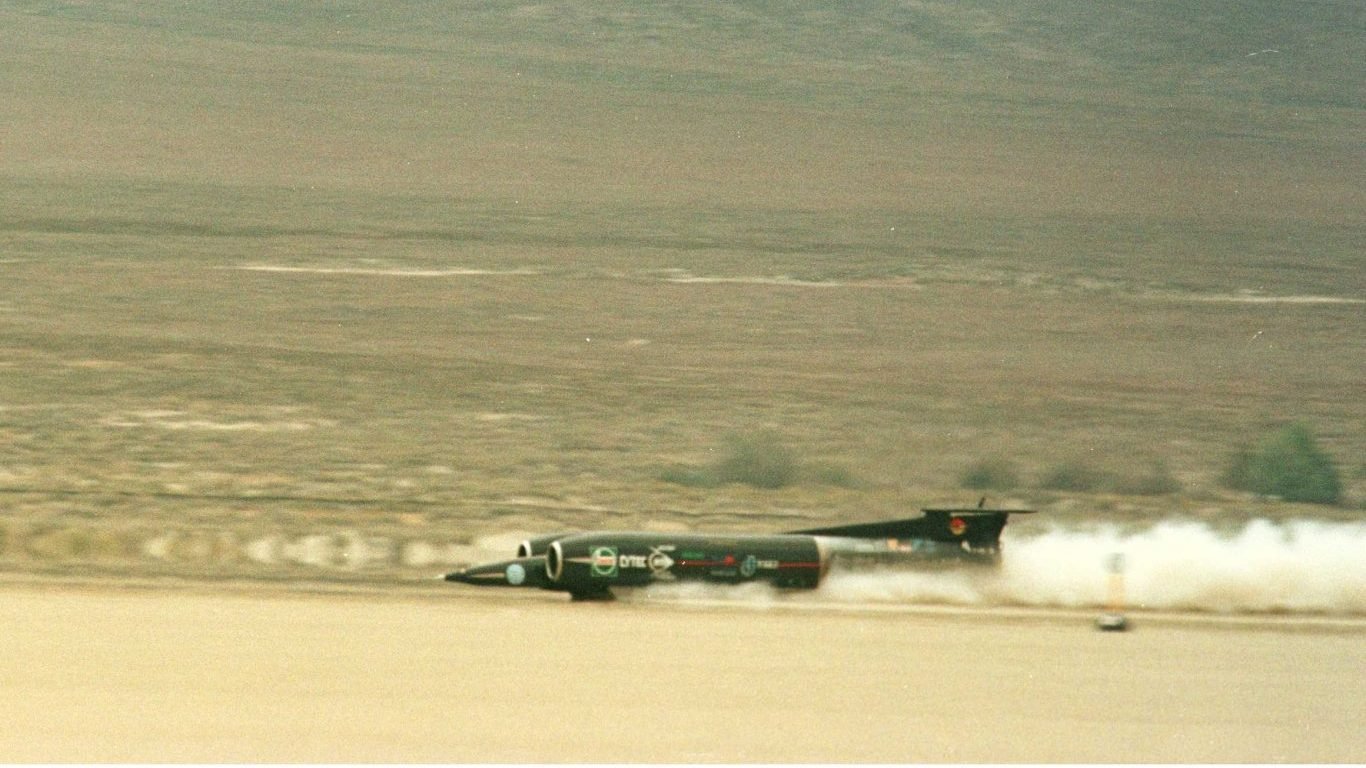

Since the first officially recognized land speed record in 1898, there have always been daredevils who aimed to push the boundaries of speed, driving cars faster and faster. Drivers have set records in vehicles powered by steam, electricity, gasoline, and even rockets. The impressiveness of these records is only matched by the incredible stories of the people who made them possible.
24/7 Wall St. reviewed sources such as the History in Numbers Land Speed Record database and reviewed some of the innovative vehicles that set land speed records. The car’s speed is calculated by averaging the top speed of two runs in opposite directions.
This is a selection of record-breaking runs, but there are dozens more land speed records that were set and broken in the intervening years. Many of the drivers and vehicles that set records set multiple records in short succession.
In nearly every case, the cars that set these records were specifically built for that purpose. This is why these cars look almost nothing like what the average American drives on a daily basis. While this kind of outside-the-box thinking is necessary to break records, major automakers try it as well, sometimes constructing some truly bizarre vehicles. These are the the most intriguing concept cars that never saw the light of day.
Click here to see a history of land speed records.
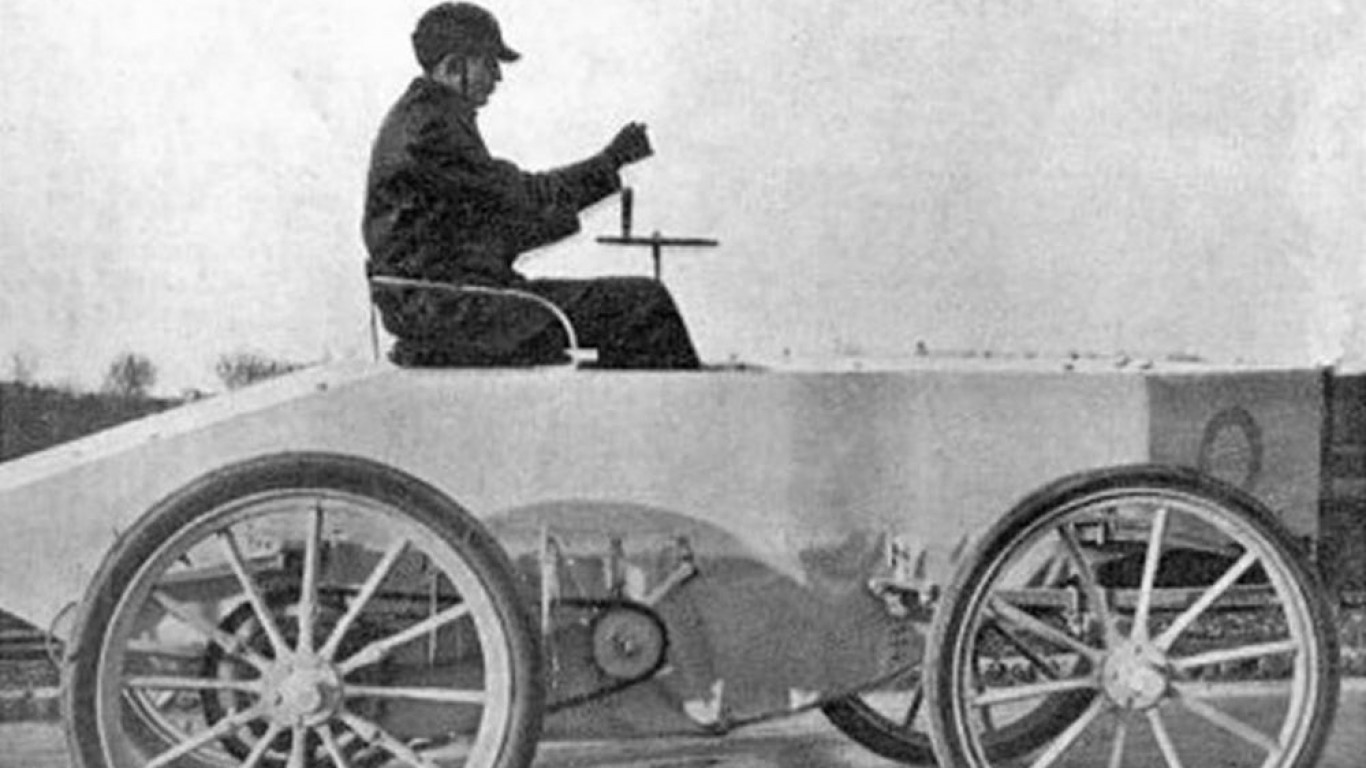
1. Jeantaud Duc
> Speed: 39 mph
> Driver: Gaston de Chasseloup-Laubat
> Set in: 1898
According to Guinness World Records, France’s Jeantaud Duc and its driver Gaston de Chasseloup-Laubat set the world’s first ever officially recognized land speed record. This electric vehicle drove at just over 39 mph in 1898. The record stood very briefly, as a Belgian vehicle would break the 40 mile per hour mark less than a month later.
[in-text-ad]
2. La Jamais Contente
> Speed: 66 mph
> Driver: Camille Jenatzy
> Set in: 1899
After Gaston de Chasseloup-Laubat set the land speed record, early auto manufacturer Camille Jenatzy challenged him to a competition to see whose car was the fastest. Jenatzy set a new record that was immediately broken by de Chasseloup-Laubat at nearly 44 mph. Jenatzy hit nearly 50 mph 10 days later, but the Jeantaud bested his vehicle again after a few weeks. Jenatzy responded by creating the electric-powered La Jamais Contente, or “The Never Satisfied.” It was the first vehicle to surpass 100 kilometers per hour — faster than scientists of that era thought the human body could withstand. That record, just under 66 mph, would be the last held by an electric car.
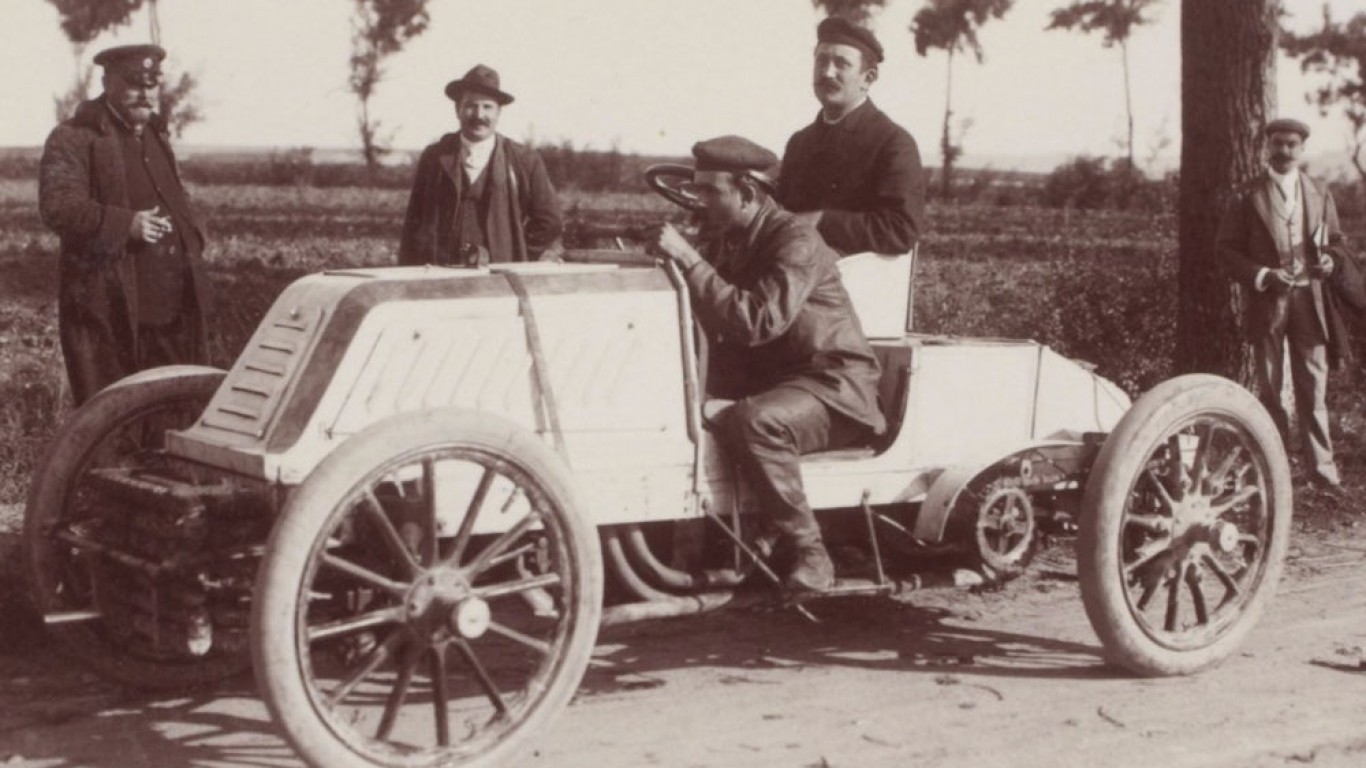
3. Mors Type Z
> Speed: 76 mph
> Driver: William K. Vanderbilt
> Set in: 1902
Heir to the Vanderbilt fortune, William K. Vanderbilt helped usher in a new era of land speed records. His Mors Type Z racer became the first vehicle powered by an internal combustion engine to claim the title of the fastest car in the world, at just over 76 mph. He was also the first American driver to hold the record.
4. Ford 999 Racer
> Speed: 91 mph
> Driver: Henry Ford
> Set in: 1904
Just a year after founding his company, Henry Ford was intent on setting a land speed record to get publicity to help him drum up business. He took his new 999 Racer out onto the frozen Lake St. Clair outside of Detroit in January 1904 and set a new record of more than 91 mph. Though the record stood for less than a month, Ford jumpstart his business — and the rest is history.
[in-text-ad-2]
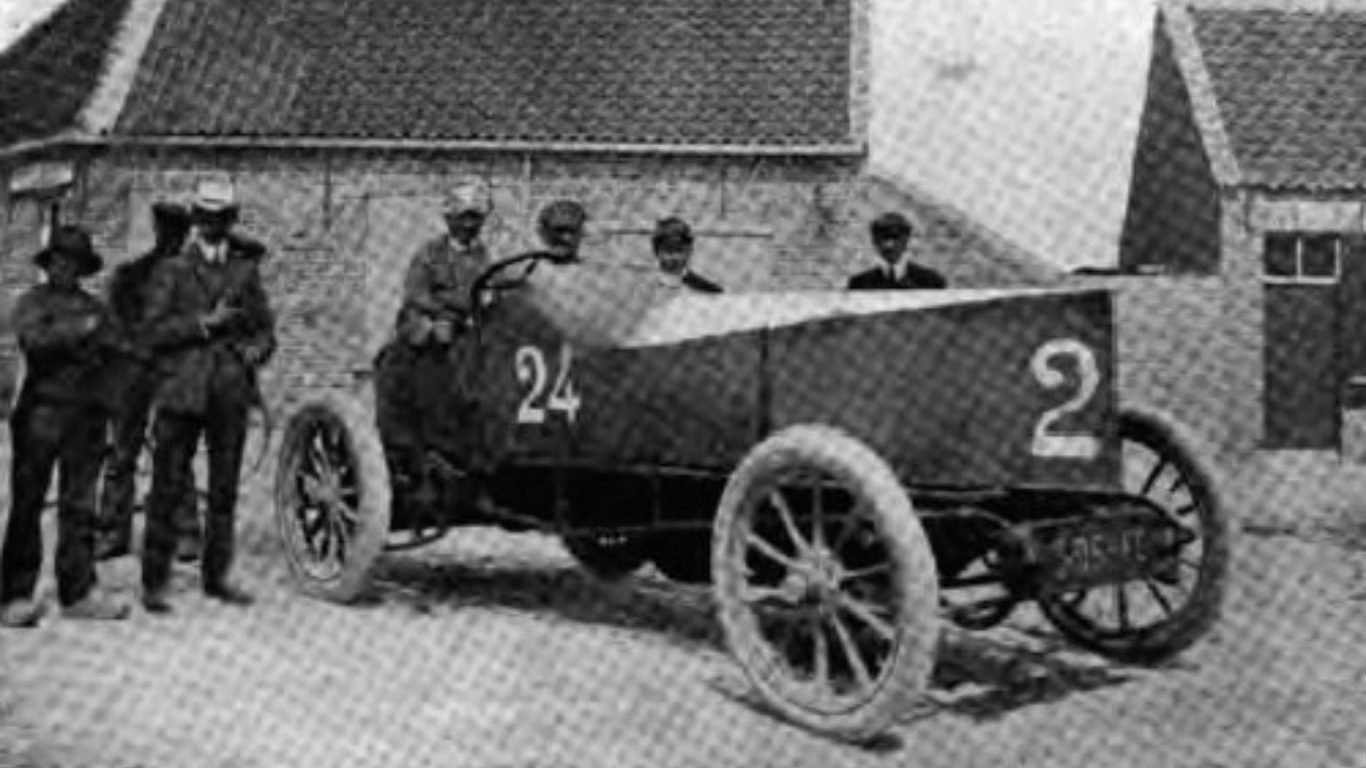
5. Gobron-Brillié
> Speed: 104 mph
> Driver: Louis Rigolly
> Set in: 1904
The first car to travel over 100 mph did so in the summer of 1904 in Ostend, Belgium. Driver Louis Rigolly drove a car from Gobron-Brillié, an early French automaker. The record was all the more impressive because the Gobron-Brillié is one of the few cars on this list that was not specially designed to break records.
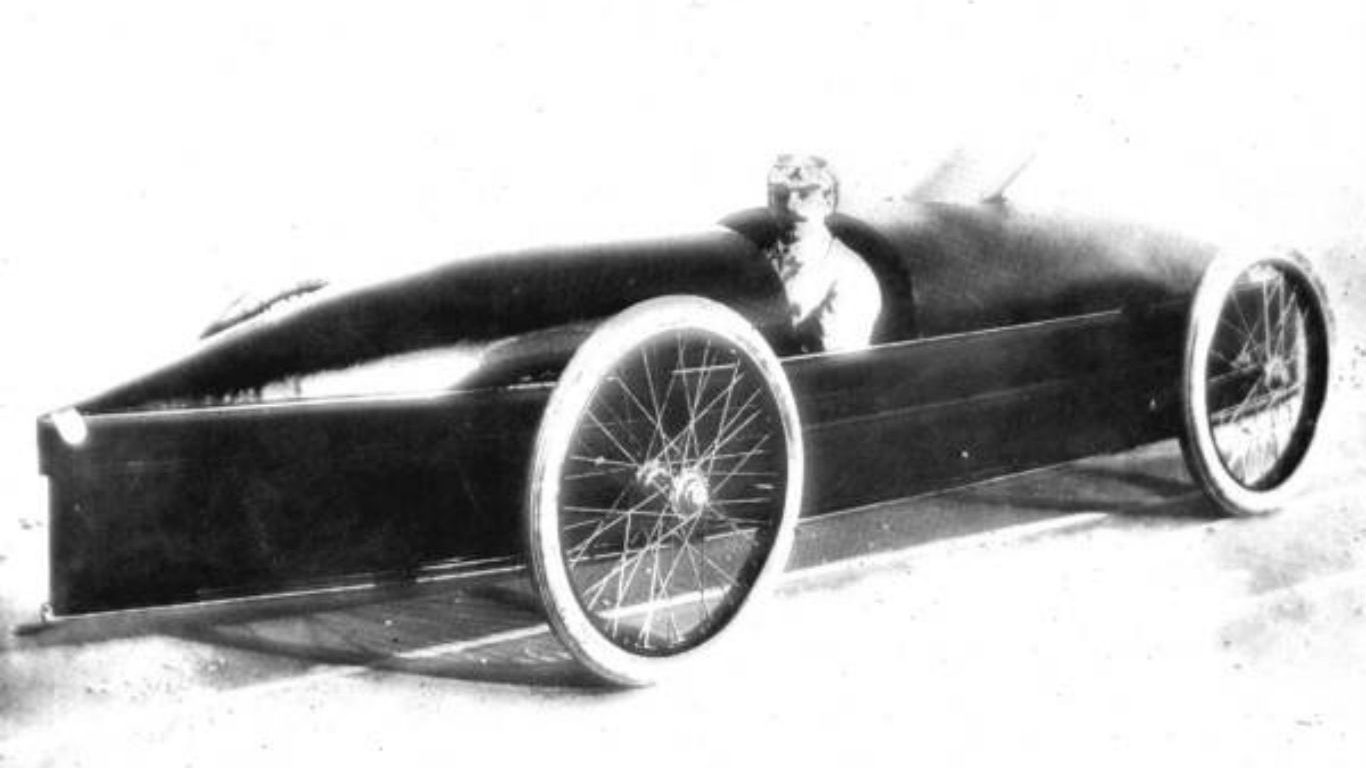
6. Stanley Rocket
> Speed: 122 mph
> Driver: Fred Marriott
> Set in: 1906
In 1906, mechanic Fred Marriott would become the second and final driver to steer a steam-powered vehicle to a land speed record. Marriott modified a Stanley Steamer, one of the more popular consumer vehicles of that era, to drive at nearly 122 mph.
[in-text-ad]
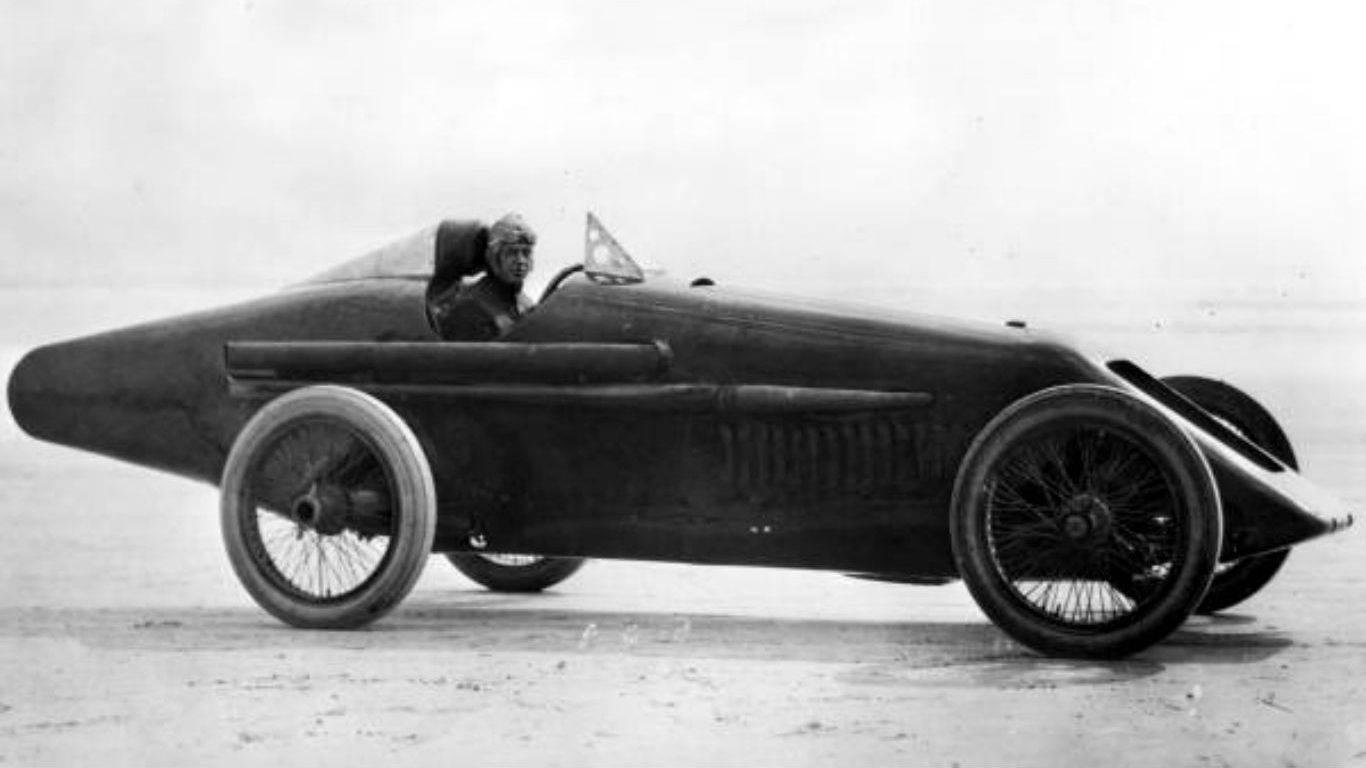
7. Duesenberg
> Speed: 156 mph
> Driver: Tommy Milton
> Set in: 1920
Tommy Milton was a legendary race car driver, becoming the first man to win two Indianapolis 500s, but his greatest claim to fame may be the land speed record he set in 1920. Fully blind in his right eye and partially blind in his left, Milton was unable to serve in World War I, so he helped the Duesenberg racing team create a twin-engine car that hit a record 156 mph in 1920.

8. Babs
> Speed: 171 mph
> Driver: J.G. Parry Thomas
> Set in: 1926
Supercar Babs was a custom vehicle with a 27-liter engine with a Benz gearbox built for Count Louis Zborowski. After the count died, J.G. Parry Thomas bought Babs with the hopes of breaking the land speed record. He ended up shattering the existing mark of 152 mph with a speed of 169 mph, then topping himself the next day at 171 mph.
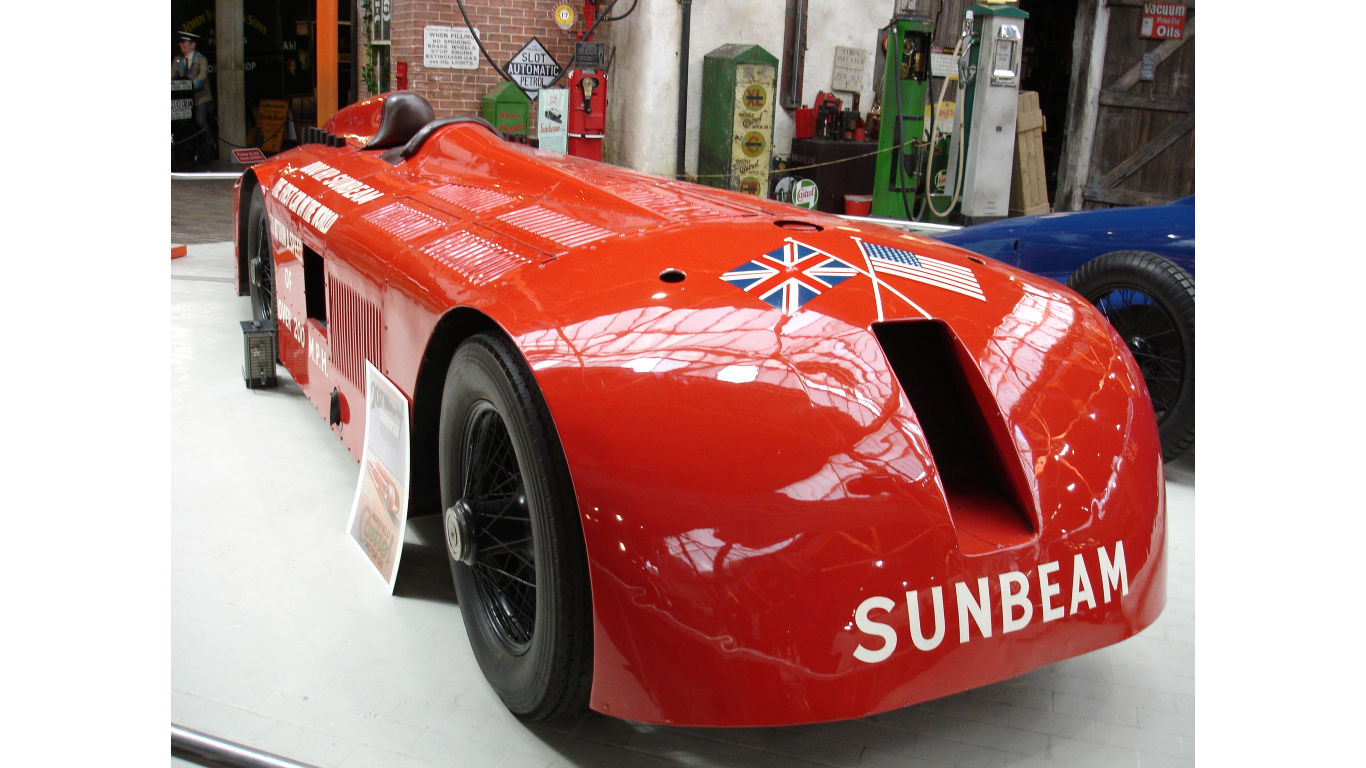
9. Sunbeam
> Speed: 204 mph
> Driver: Henry Segrave
> Set in: 1927
Though it earned the nickname “The Slug” because of its shape, the Sunbeam supercar was anything but sluggish. In 1927, it became the first vehicle to top 200 mph, obliterating the previous land speed record by nearly 30 mph. Sunbeam had several innovations that helped in setting future land speed records, such as an aerodynamic body and specially-made durable tires.
[in-text-ad-2]

10. White Triplex
> Speed: 208 mph
> Driver: Ray Keech
> Set in: 1928
A host of mechanical issues nearly kept Ray Keech and White Triplex from breaking the land speed record. The triple-engine vehicle needed some last-minute adjustments to even qualify for the record, and on its first run, a burst hose sprayed scalding water on Keech, burning him so badly he was hospitalized. Undeterred, he came back and set a new mark at just under 208 mph.
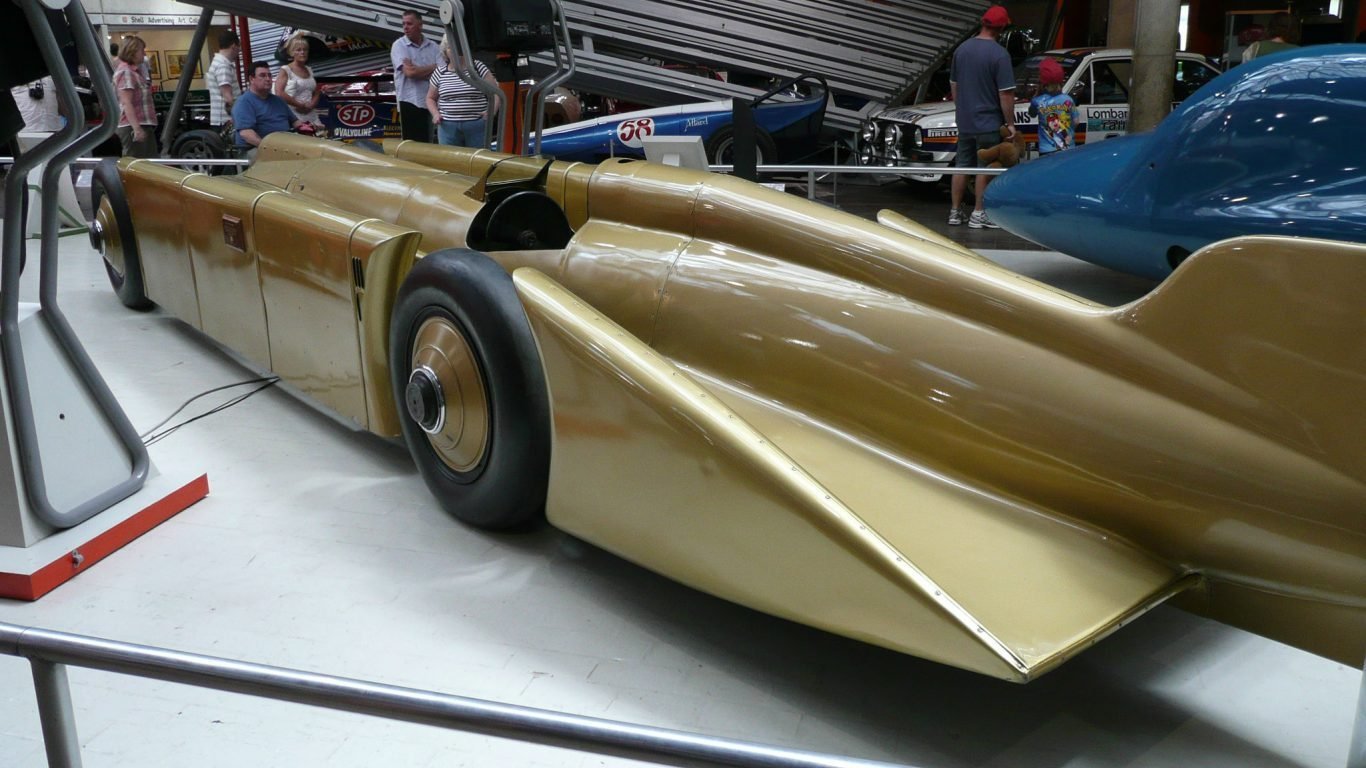
11. Golden Arrow
> Speed: 231 mph
> Driver: Henry Segrave
> Set in: 1929
After setting two land speed records in the car known as Sunbeam, including the first over 200 mph, Henry Segrave again became the fastest driver in the world in 1929. For his final record, Segrave drove the 27-foot Irving-Napier Special, also known as the Golden Arrow. The car used a single 23.9-liter engine to accelerate to a record 231 mph.
[in-text-ad]

12. Railton Rolls-Royce Blue Bird
> Speed: 301 mph
> Driver: Sir Malcolm Campbell
> Set in: 1935
The Railton Rolls-Royce Blue Bird, with Sir Malcolm Campbell behind the wheel, became the first car to break the 300 mph threshold in 1935. Campbell set four other land speed records throughout the early 1930s before finally working his way up to his fabled 301 mph mark. Campbell would be the first of many drivers to set the record at the Bonneville Salt Flats, a flat desert area with ideal driving conditions in Utah.
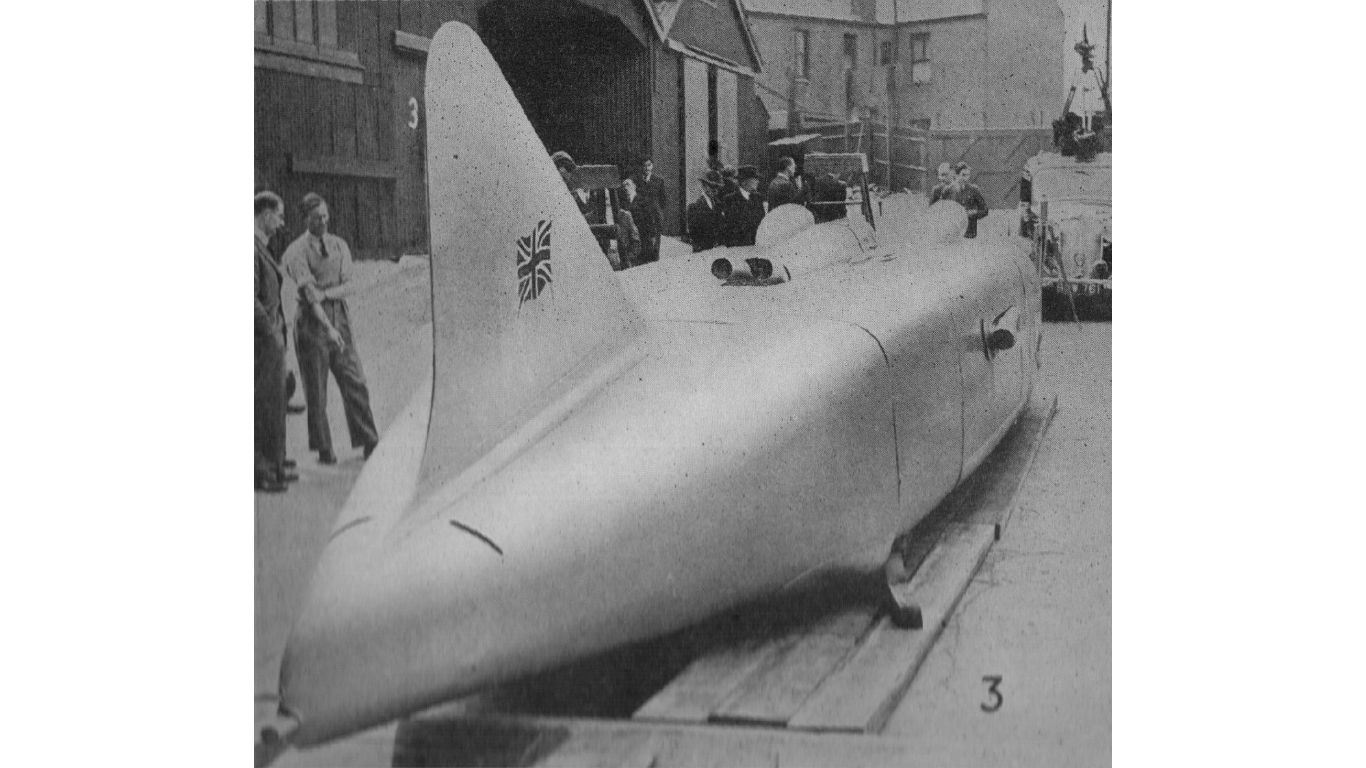
13. Thunderbolt
> Speed: 357 mph
> Driver: George Eyston
> Set in: 1938
With eight wheels and weighing more than 7 tons, the Thunderbolt was quite a sight to see zipping across the Utah desert. Its driver, George Eyston, initially set a record at 312 mph in 1937 before breaking it in 1938, at 345 mph. John Cobb in his Railton vehicle took the record less than a month later, traveling at 350 mph. Eyston set a new record the next day, driving Thunderbolt at 357 mph.
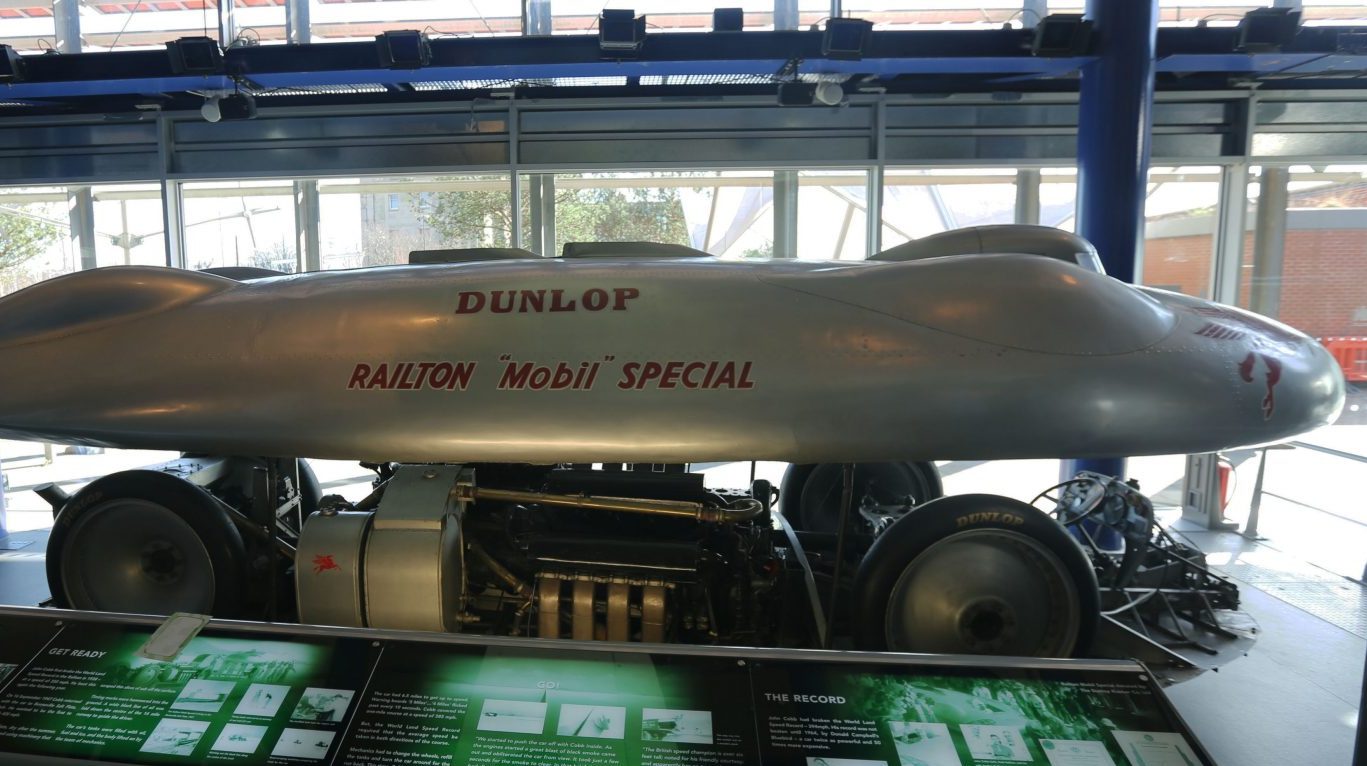
14. Railton Mobil Special
> Speed: 394 mph
> Driver: John Cobb
> Set in: 1947
The quest for the land speed record paused in the early 1940s due to World War II. In 1947, John Cobb returned to the Bonneville Salt Flats, where he had set his existing record of just under 370 mph eight years earlier. He drove an upgraded version of his previous Railton vehicle, called the Railton Mobil Special, at 394 mph. No one would break this record until the 1960s. The Railton Mobil Special would also be the final vehicle powered by an internal combustion engine to be the fastest in the world.
[in-text-ad-2]
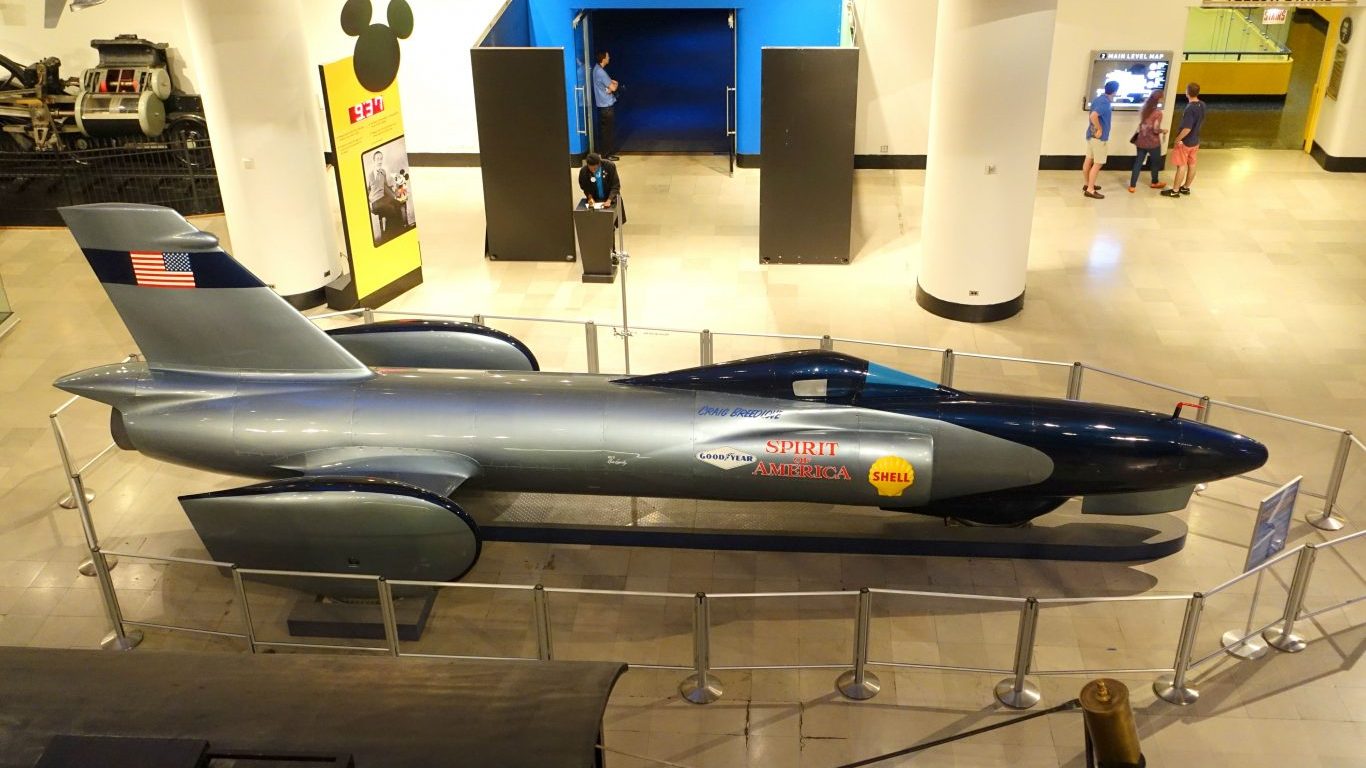
15. Spirit Of America
> Speed: 407 mph
> Driver: Craig Breedlove
> Set in: 1963
Driver Craig Breedlove was the first to break the 400, 500, and 600 mph thresholds. His first of five land speed records came in 1963, when he piloted the Spirit of America at 407 mph. The FIA (Federation Internaionale De L’Automobile) refused at first to verify the record because the Spirit of America had just three wheels, while its rules stipulated that four were necessary. The governing body eventually relented. The Spirit of America ushered in a new era of automotive innovation, becoming the first jet engine-powered vehicle to set the land speed record.
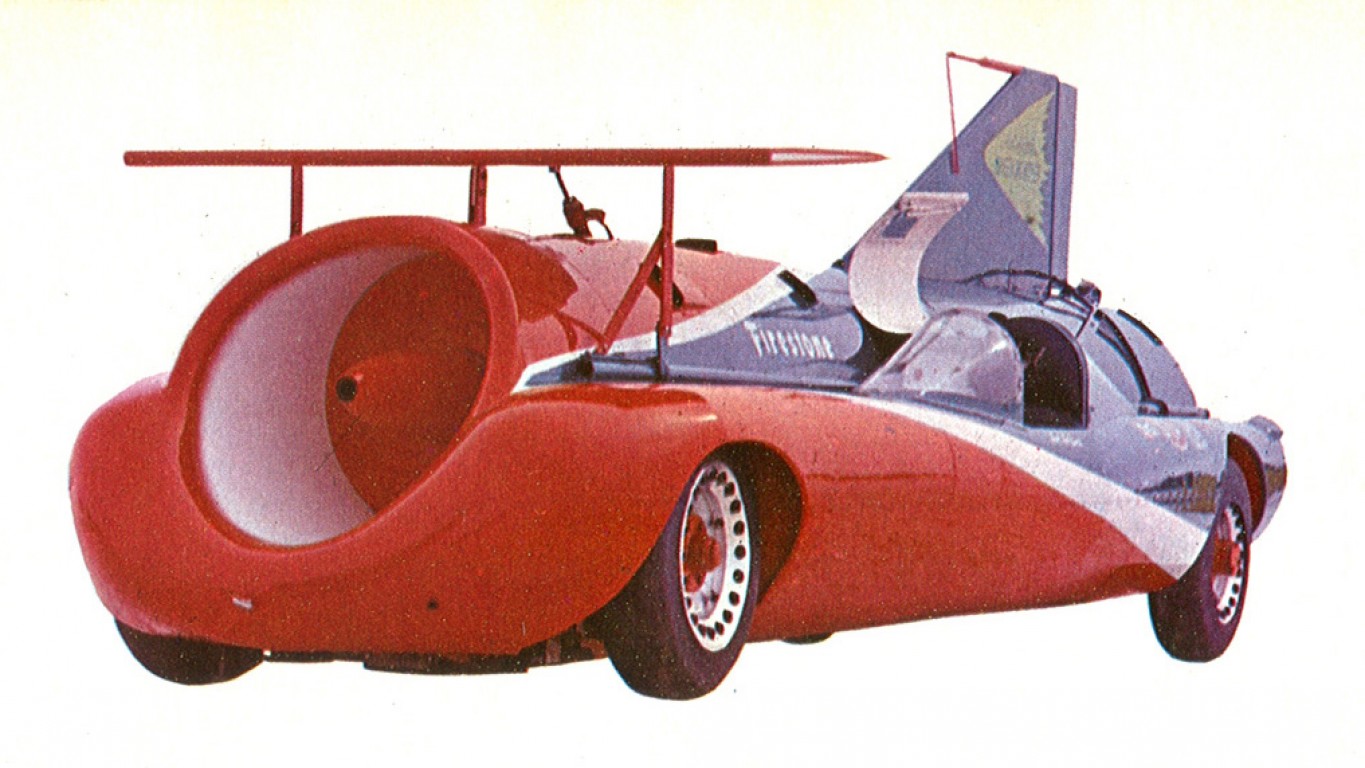
16. Green Monster
> Speed: 577 mph
> Driver: Art Arfons
> Set in: 1965
Art Arfons and his Green Monster battled back and forth with Craig Breedlove and his Spirit of America over the land speed record throughout the early 1960s. Arfons, working with Firestone, and Breedlove, working with Goodyear, served as something of a proxy war between the tire makers to see whose wheels would be on the record-holder. From October 1964 to November 1965, the two drivers took the record away from each other five different times. Arfons’ final record of slightly less than 577 mph lasted for just eight days.
[in-text-ad]
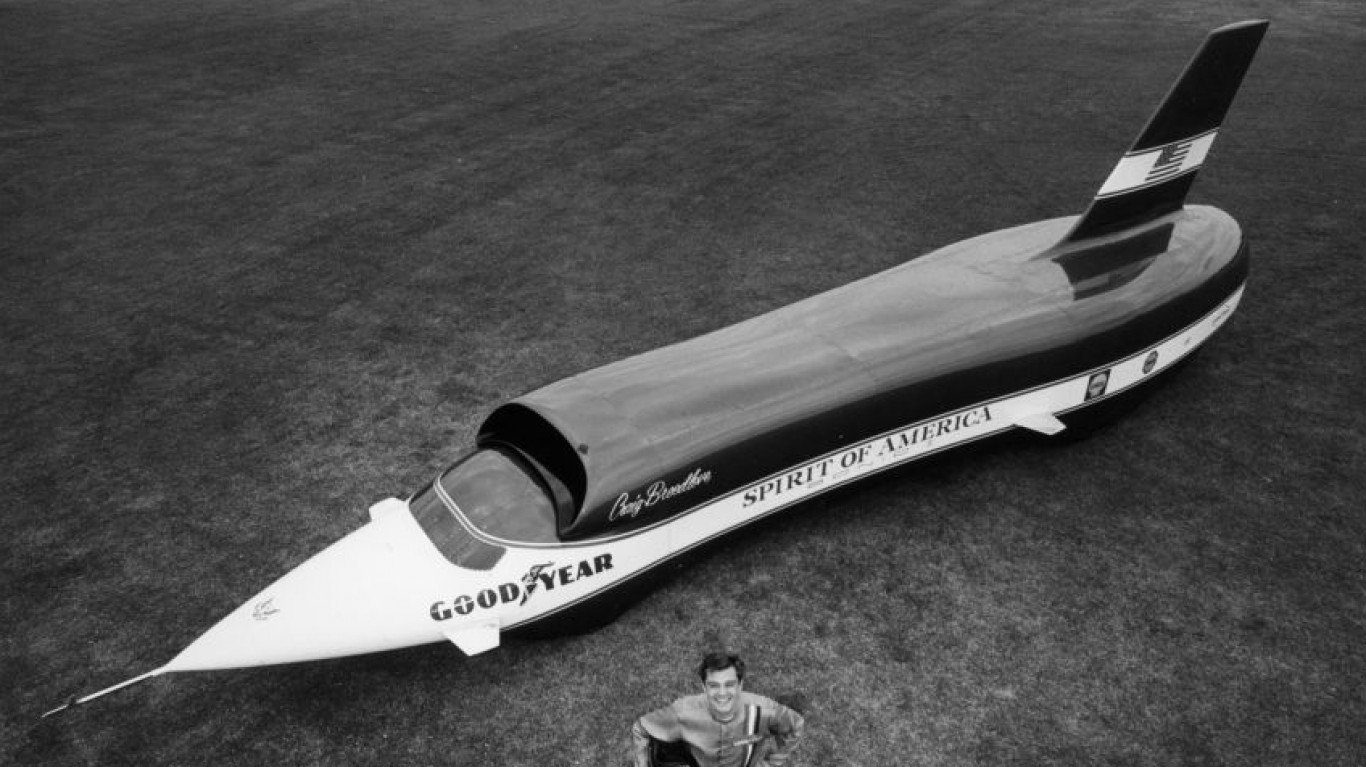
17. Spirit of America Sonic 1
> Speed: 601 mph
> Driver: Craig Breedlove
> Set in: 1965
Craig Breedlove drove Spirit of America Sonic 1, a scaled-up version of his previous vehicle, to become the first to drive at over 600 mph, setting a land speed record that would stand for nearly five years. The Sonic 1’s initial land speed record of 555 mph stood for less than a week, but the vehicle had plenty more power under the hood. Breedlove smashed Art Arfons’ record of 576 mph eight days after it was set, getting the Sonic 1 to nearly 601 mph — his final land speed record.
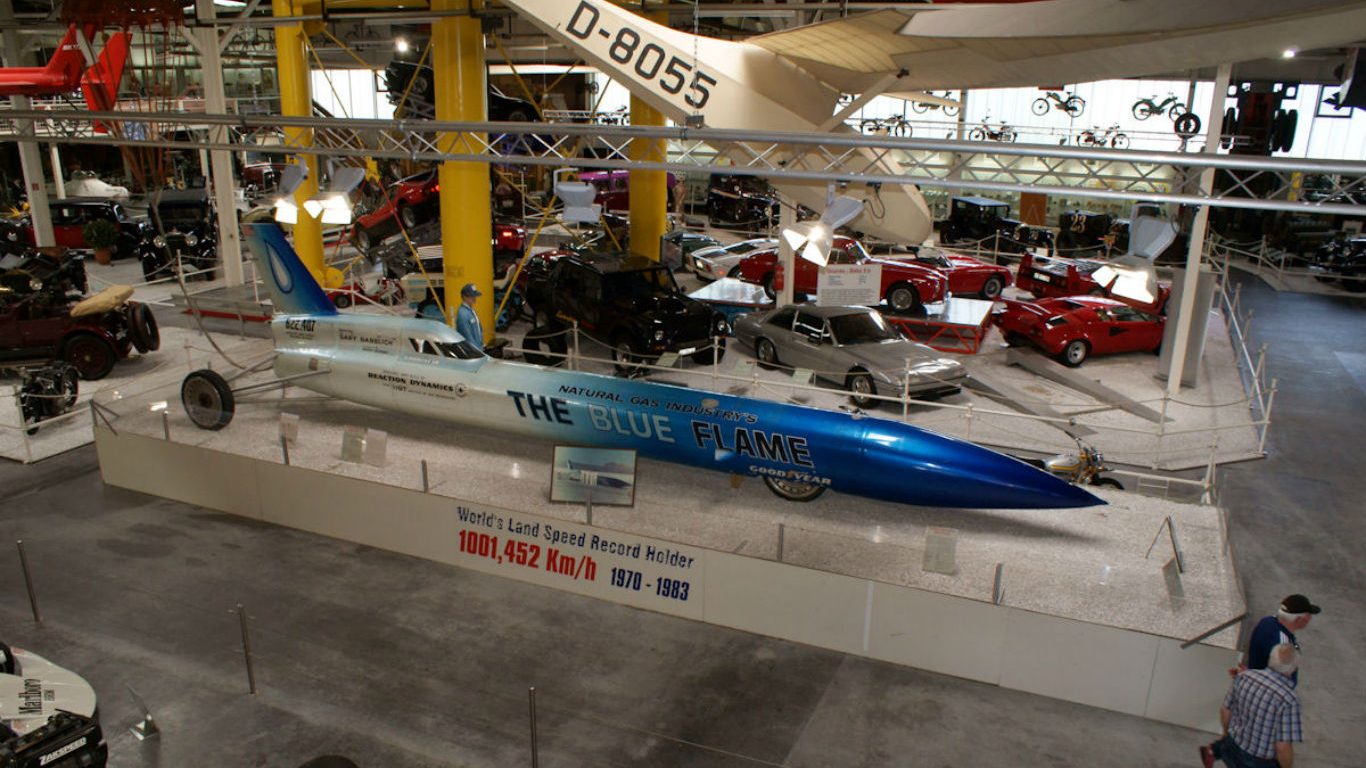
18. The Blue Flame
> Speed: 622 mph
> Driver: Gary Gabelich
> Set in: 1970
The Blue Flame became the first car to travel at over 1,000 kilometers per hour, or around 622 mph, in 1970. It was also the first, and so far only, rocket-powered vehicle to hold the record. The record stood for well over a decade. The Blue Flame was over 37 feet long and produced over 22,000 pounds of thrust.
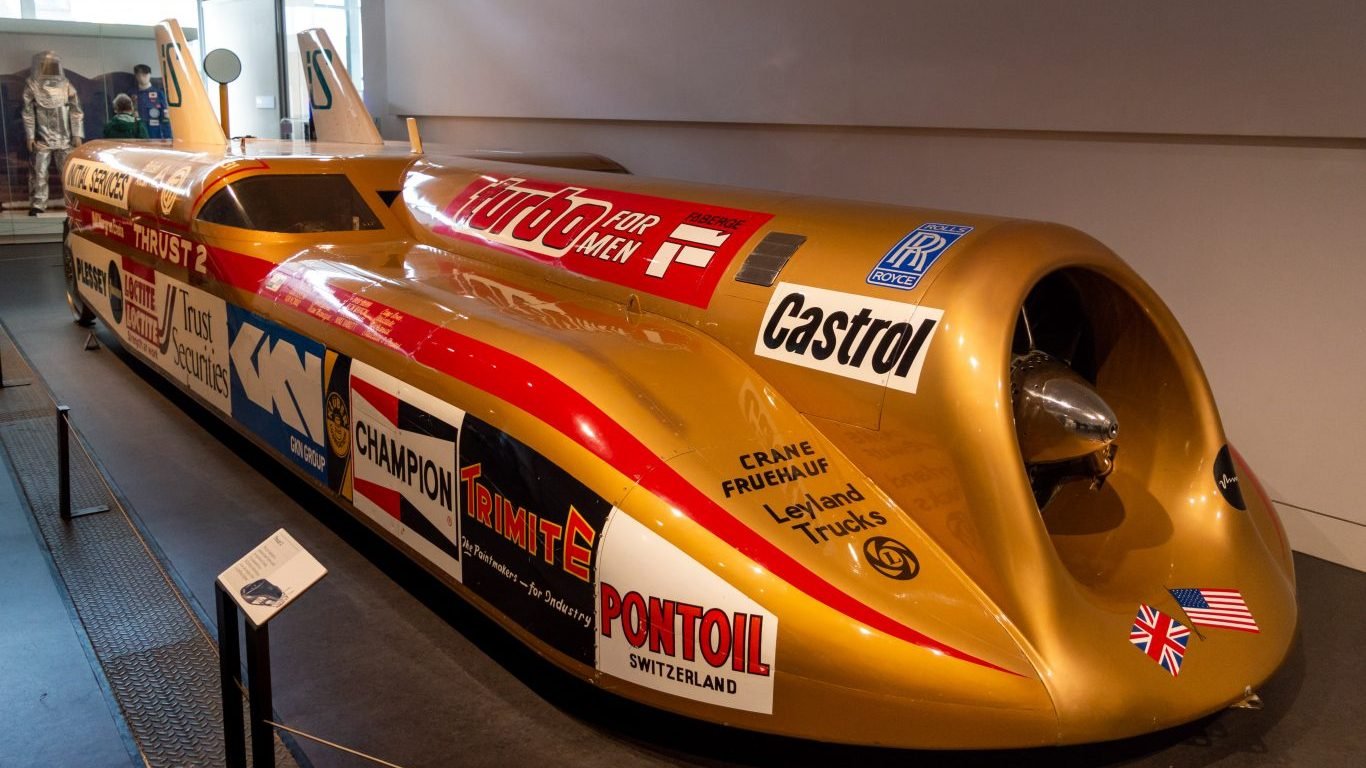
19. Thrust 2
> Speed: 633 mph
> Driver: Richard Noble
> Set in: 1983
Bad weather and a crash nearly derailed the hopes for the jet engine-powered Thrust 2 to set the land speed record, but driver Richard Noble was finally able to accomplish the feat in 1983. Noble set the record at 633 mph at Black Rock Desert in Nevada after the weather made it impossible to attempt the run at the Bonneville Salt Flats. The record stood for over 13 years, before it was smashed by over 80 mph.
[in-text-ad-2]
20. Thrust SSC
> Speed: 763 mph
> Driver: Andy Green
> Set in: 1997
The current land speed record has stood for more than two decades. In 1997, driver Andy Green piloted Thrust SSC at 763 mph — making him the first person to break the sound barrier on land. The vehicle used Rolls-Royce jet engines to generate about 50,000 pounds of thrust and go from 0 to 600 mph in 16 seconds. Green is currently working to set another land speed record — this time targeting 1,000 mph.
Sponsored: Attention Savvy Investors: Speak to 3 Financial Experts – FREE
Ever wanted an extra set of eyes on an investment you’re considering? Now you can speak with up to 3 financial experts in your area for FREE. By simply
clicking here you can begin to match with financial professionals who can help guide you through the financial decisions you’re making. And the best part? The first conversation with them is free.
Click here to match with up to 3 financial pros who would be excited to help you make financial decisions.
Thank you for reading! Have some feedback for us?
Contact the 24/7 Wall St. editorial team.
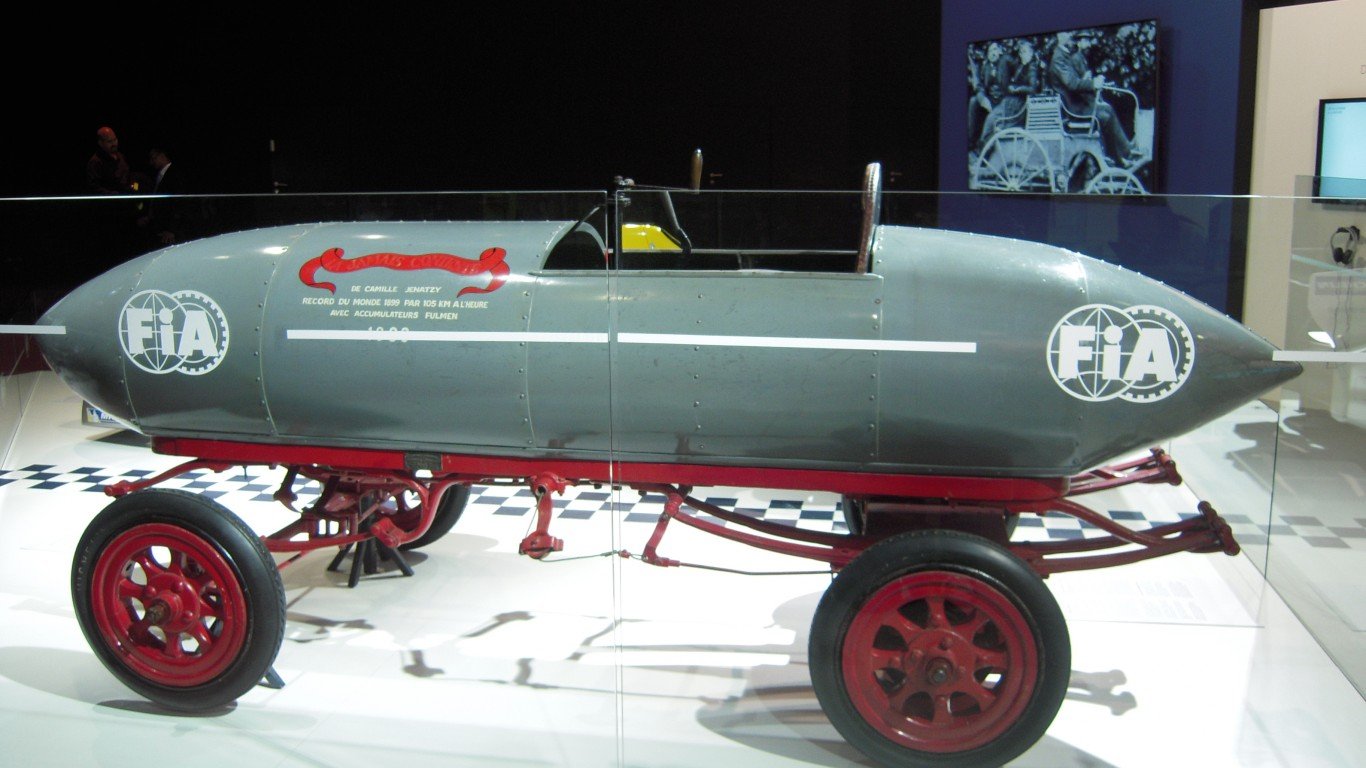
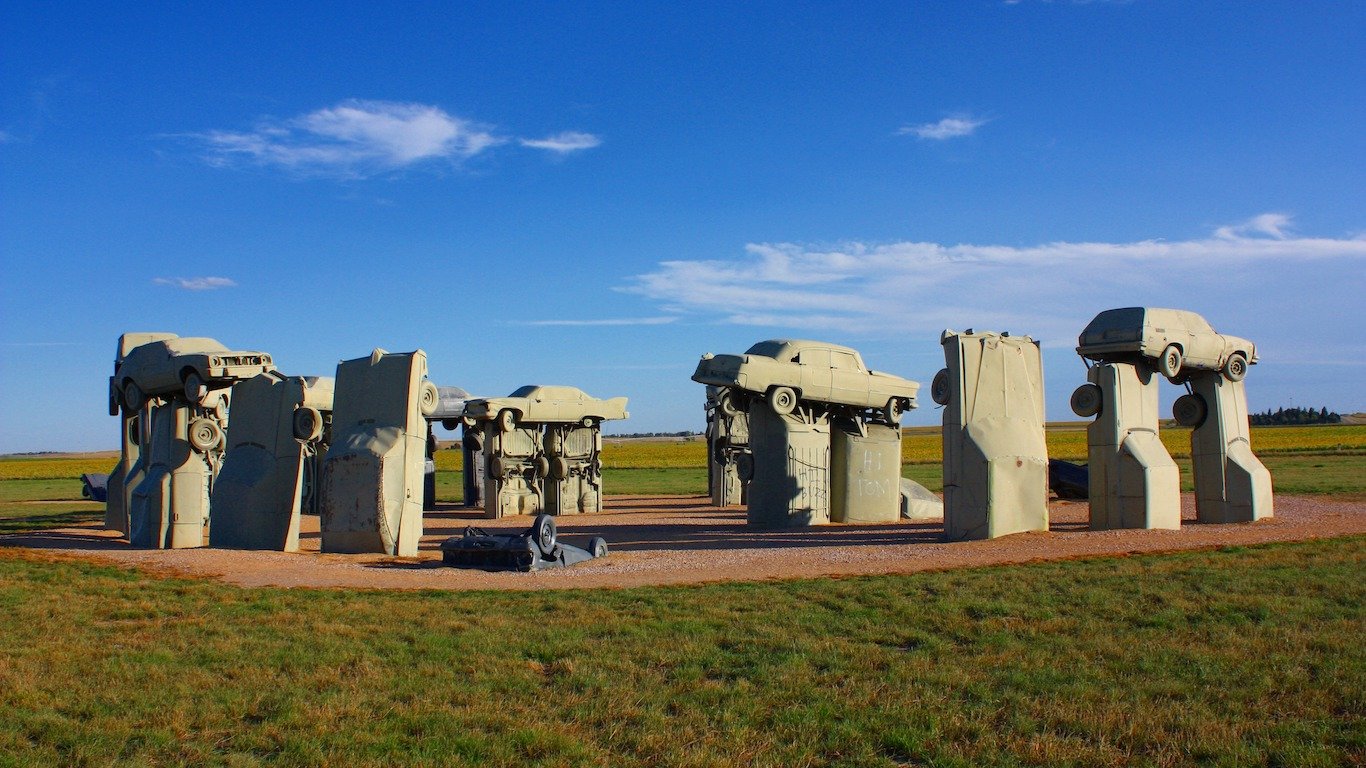 24/7 Wall St.
24/7 Wall St.
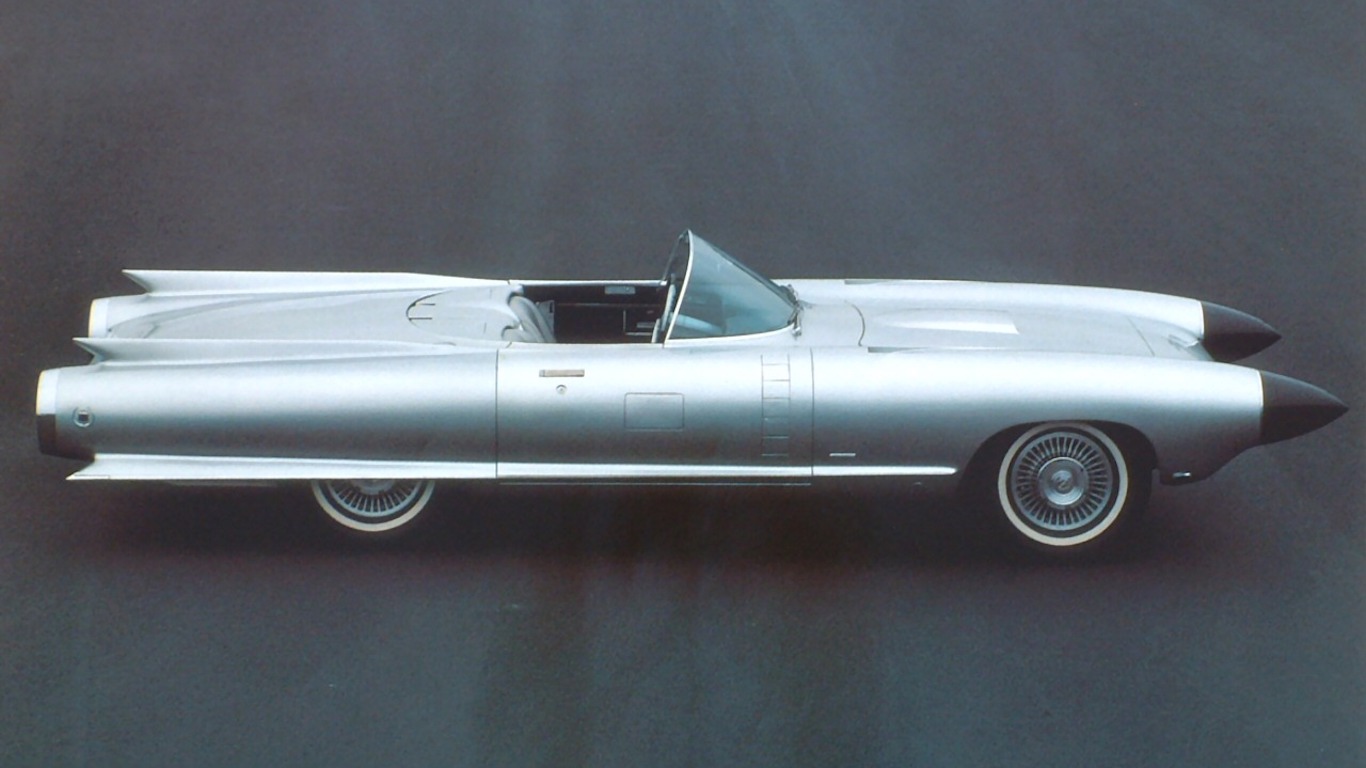 24/7 Wall St.
24/7 Wall St. 24/7 Wall St.
24/7 Wall St.